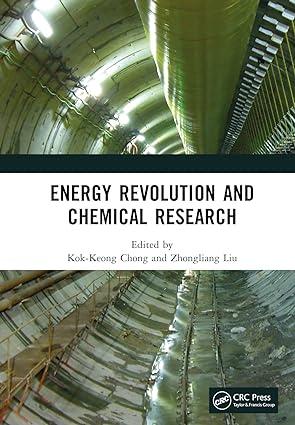Answered step by step
Verified Expert Solution
Question
1 Approved Answer
6. In a non-isothermal catalytic reactor undergoing a first order exothermic chemical reaction, the heat flux within an elemental section of the spherical catalyst is

6. In a non-isothermal catalytic reactor undergoing a first order exothermic chemical reaction, the heat flux within an elemental section of the spherical catalyst is given by: q=kedxdT where q is the heat flux (Wm2),ke the effective thermal conductivity (Wm1K1),T the absolute temperature (K) and x the special coordinate (m). The heat generation within the same elemental section of the catalyst is defined as: q=(H)DedxdCA where q is the heat generated (Wm2),H the reaction enthalpy (Jmol1),De the effective diffusivity (m2s1),CA the concentration of reagent A(molsm3) and x the special coordinate (m). QUESTION 6 CONTINUES ON THE NEXT PAGE TURN OVER PAGE 5 of 9 QUESTION 6 CONTINUES (a) Defining the surface temperature of the catalyst particle as TS and the centre point temperature of the catalyst particle as TC, show that the maximum difference between the surface and core temperature of the catalyst particle is given by: TsTcTsmax=keTs(H)DeCAs= [5 marks] (b) Given a case where H=1105Jmol1,De=1105m2s1,CAs=0.1 kmolm3 and ke=3Wm2K1; what would be the maximum temperature rise expected between the core and surface of the catalyst particle? [2 marks] (c) Given Figure 3 on the next page, a particular reaction has a Thiele Modulus of 0.5 and the parameter =0.6. What will be the magnitude of the effectiveness factor? [3 marks] (d) Explain and justify your answer to part c
Step by Step Solution
There are 3 Steps involved in it
Step: 1

Get Instant Access to Expert-Tailored Solutions
See step-by-step solutions with expert insights and AI powered tools for academic success
Step: 2

Step: 3

Ace Your Homework with AI
Get the answers you need in no time with our AI-driven, step-by-step assistance
Get Started


